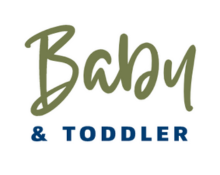
Using a breast pump can be a convenient way to express breast milk and maintain your milk supply. Here’s a general guide on how to use a standard electric breast pump:
Read the instructions: Before using the breast pump, carefully read the manufacturer’s instructions that come with the pump. Each pump may have slight variations in design and operation, so familiarize yourself with the specific instructions provided.
Prepare the pump and accessories: Ensure that the breast pump and all its accessories, such as breast shields, tubing, and collection bottles, are clean and assembled correctly according to the instructions. Make sure that all parts are properly connected and securely attached.
Find a comfortable and private space: Choose a quiet and comfortable area where you can relax and focus on pumping. You may want to have a pillow or cushion for support.
Wash your hands: Thoroughly wash your hands with soap and water before handling the breast pump and expressing breast milk.
Position the breast shield: Place the breast shield or flange over your breast, making sure that your nipple is centered and able to move freely within the shield. The flange should fit comfortably around your breast without causing any pain or discomfort.
Turn on the pump: Start with the lowest suction level and gradually increase the suction until you find a comfortable and effective setting. Each person’s comfort level may vary, so adjust the suction according to your preference.
Begin pumping: Gently press the breast shield against your breast to create a seal. Start the pumping session by using a rapid, rhythmic motion, similar to a baby’s sucking pattern. It’s important to mimic a baby’s natural nursing rhythm to stimulate milk flow.
Switch breasts if desired: If you’re pumping both breasts, you can switch sides after a few minutes or when milk flow slows down. Some pumps have a dual pump option, allowing you to pump both breasts simultaneously.
Continue pumping and monitor milk flow: Maintain a consistent pumping rhythm and suction level to encourage milk flow. Massage and compress your breasts during the pumping session to help empty the milk ducts.
Store expressed milk: As you pump, the breast milk will collect in the attached collection bottles or bags. Once you’ve finished pumping, carefully detach the bottles or bags and label them with the date and time. Store the expressed milk in the refrigerator or freezer according to the recommended guidelines.
Clean and sanitize: After each pumping session, disassemble the pump parts and clean them thoroughly according to the manufacturer’s instructions. Proper cleaning and sanitization of the pump parts are important to maintain hygiene and prevent contamination. If necessary sterilize all parts.
Remember, every woman’s pumping experience may be different, and it may take some time to find the right suction level and pumping routine that works best for you. If you have any difficulties or concerns, consult with a lactation consultant or breastfeeding specialist for personalized guidance and support.
